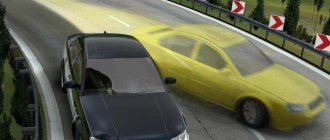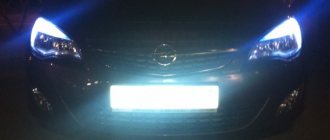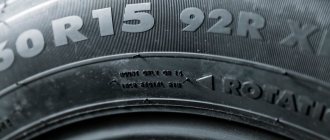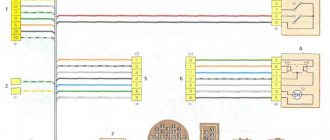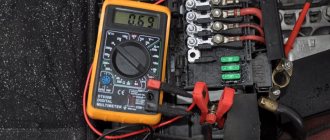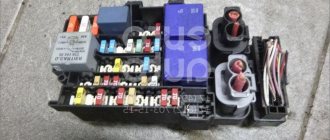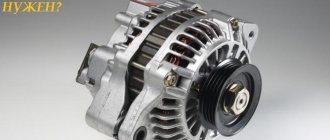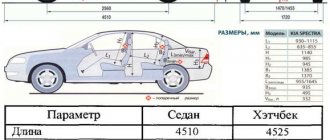The idea of daytime running lights first originated in the Scandinavian countries. There were more than good reasons for such a non-standard innovation - here, during daylight hours, which are much shorter than in southern countries, foggy, rainy weather prevails. As a result, this significantly worsens visibility on roads, increasing the risk of traffic accidents. Therefore, Sweden, Finland, and Norway have developed and implemented laws requiring vehicles to be equipped, in addition to conventional lighting, with special lighting devices. The design of these devices resembled ordinary fog lights. The innovation had an impressive positive effect and very soon spread throughout the world.
Tips for choosing DRLs.
Purpose of navigation lights
The main purpose of such auxiliary lights is to help road users during the daytime, when there is not much light on the highway. For example, in cloudy weather, during thick fog or heavy rain or snowfall. They are installed not to illuminate the highway; ordinary powerful car lighting functions for this role, but to make a moving or stationary car more visible to drivers of oncoming and passing cars, increasing the comfort and safety of driving. Such lighting devices are installed on cars either serially, immediately during the production assembly process, which, by the way, is practiced by many well-known car manufacturers, or frequently, on their own or with the help of specialists at service stations.
In the European Union countries, in particular, the presence of such lights is required by special standards, which is why the vast majority of car factories do this. Note also that in a number of European countries, the rules require drivers to turn on daytime running lights or low beams when traveling outside the city during the daytime every year from May 1 to October 1.
Daytime running lights - what are they?
Daytime running lights (DRLs) are light sources (lamps or kits) directed forward and designed to
increasing the visibility of the vehicle when moving during the day.
For the first time, the use of DRLs was made mandatory in the first half of the 70s of the twentieth century in Finland when moving cars on rural and country roads. By the way, most car manufacturers started installing daytime running lights as a necessary option since that time.
In the absence of DRLs pre-installed by the manufacturer, the car owner can carry out independent installation, or contact a service station to install them, and the installation kits themselves are available for free sale in a wide price range.
In the Russian Federation, for the first time, the application and regulations for the installation of daytime running lights were adopted in May 2010.
In accordance with the decree, transformations were also made to the traffic rules.
Thus, paragraph 19.5 states: “During the day, low-beam headlights or daytime running lights must be turned on on all moving vehicles for the purpose of identifying them.”
What is the difference between using DRLs and low beam headlights? Roughly speaking, nothing, except for the increased load on the generator (due to the lighting and dimensions of the license plate, coupled with the lighting of the headlights) and, as a consequence, fuel consumption
.
Structurally, DRLs have significantly lower energy consumption when compared with simple headlights due to the use of LEDs in their design, which provide sufficient luminous flux to indicate the car during the day. The load on the generator is reduced, fuel consumption is significantly reduced, exhaust gas emissions are reduced, etc. and so on.
Pros and cons of car daytime running lights
The advantages of such car lighting are obvious. Thus, it makes it much more visible on the highway, minimizing the possibility of not noticing it from a distance and unexpectedly getting into an accident. This is the main “plus”, since it benefits the health and lives of many participants in the movement. Its peculiarity is that such lighting, and it is most often LED, is much easier to notice in the daytime than when the headlights are on low beam. In addition, it usually turns on automatically immediately after the engine starts, meaning the driver does not have to take special care to turn it on. It should also be taken into account that such diode daylight lighting consumes much less energy than low beam, that is, it also saves money.
As practice has shown, it also has certain disadvantages. First of all, this is the need to spend additional money on its purchase and installation. In addition, it is important to correctly install such lights on the car so that they work harmoniously with the rest of the lighting installed on it, and this will require the help of qualified auto specialists. And finally, if installed incorrectly, they can worsen the overall appearance and design of the car. Therefore, lighting equipment must be additionally selected and installed very carefully, taking into account professional advice and recommendations.
Life hack: how to connect DRLs from a car generator?
Recently, daytime running lights have become a mandatory component in the list of basic equipment of any new car. However, owners of outdated cars should not be upset - the car accessories market offers various alternatives to the main “neighbor”, which can be installed on their own.
The essence of modernization
The technology of connecting DRLs from a car generator did not arise by chance. After all, the main GOST requirements for the functioning of DRL are as follows:
- powerful light-emitting diodes must be turned off when the head light is activated, which is the “near”, “far” or luminous flux from the PTF;
- DRLs should automatically start when the body that controls the engine operating modes moves to the “on” position;
- it must be possible to turn off the running lights without the help of an external tool, i.e. button.
Self-connection of non-standard DRLs from the car generator via a four-pin relay
The instruments and materials used for the operation are:
- crimping device or pliers;
- wire cutters, soldering iron and knife;
- lighter or hair dryer (necessary for laying shrink tape);
- two-core wire for connecting a pair of lights to each other;
- single wires;
- four-pin 12 V relay;
- heat shrink tape;
- plastic clamps;
- 10 A fuse;
- button for forcibly turning off “automation”.
The simplest ideology for connecting DRL is no more complicated than installing a heated separator for diesel fuel. It involves activating the lights when the ignition is turned on, and turning them off when the car engine is stopped. A noticeable disadvantage of this solution is that it does not meet the requirements of GOST, because daytime running lights light up regardless of the activity of the head lighting and cannot be deactivated with a button.
Let's look at how to connect DRLs from the generator via a four-pin relay:
- The 87th contact is connected to the plus of the daytime running lights;
- The 86th contact extends to the plus side lights;
- The 85th contact is connected to the positive terminal from the ignition switch;
- The 30th contact is connected to the positive terminal of the generator (D+) through a 10A fuse.
Bolt terminals are soldered and crimped directly to the negative terminals of the lamps. The insulation is made by heat shrink and the terminals are firmly attached via a bolted connection to the ground of the vehicle. The DRL forced shutdown button is built between the generator and the four-pin relay, i.e. between pin 30 and pin D.
The system operation scheme is as follows:
- When the engine starts, the plus from the generator goes to the relay and the LEDs light up.
- When the lights are turned on, the DRLs go out.
For your information
- An alternative to connecting from a generator is the technology of connecting from a battery. In this case, the 30th contact is connected to the positive terminal of the battery and the running lights come on when the ignition is turned on.
- You can additionally connect “+” from the handbrake to the 86th contact of the relay. Then, when the parking brake is activated, the DRLs will go out.
Topical guide: how to connect DRLs from a standard generator via a five-pin relay
The circuit with a five-pin relay involves the use of only four contacts and can be used to connect daytime running lights on the Lada Priora VAZ 2170. Output No. 87 is not used. Otherwise, the procedure for connecting DRL via a relay is as follows:
- the plus from terminal “D” of the generator is connected to the 30th contact;
- the positive wire from the dimensions is connected to the 85th output;
- “+” is removed from contact 87a, which goes to power the daytime running light units;
- The 86th pin is connected to the vehicle ground in any suitable place.
This connection of the DRL from the generator also involves the use of a button. The control mechanism is built into the lines between the generator and the 30th relay contact. When the button is turned on, the essence of the circuit’s functioning is as follows:
- when the engine is turned on, “+” from the generator goes through the switched on button to the 30th contact of the relay, from where current flows to the positive terminals of the DRL (negative terminals are connected to ground), as a result of which the LED lights light up;
- when using “dimensions”, the coil between contacts 85 and 86 is activated and the 30th contact is connected to the 87th, no current flows to output 87a and the lights go out.
Eventually
The daytime running lights are connected to the vehicle’s on-board network via either a four-pin relay or a five-pin one. In this case, the “+” of the power circuit is taken from terminal D of the generator. In this state of affairs, the headlights are activated when the engine is turned on. The relay allows you to turn off the LED lights when the side lights are turned on. In particular, you can turn off the running lights when you turn on the low beam by taking the “+” from the positive contact of the low beam instead of the “dimensions”.
autobann.su
How to choose DRL
The choice of daytime running lights depends on many important factors: starting from the make of the car on which they want to be installed, and ending with the financial resources of its owner, since some DRL models are not cheap. Therefore, car enthusiasts are often interested in how to choose running lights for a car. The answer cannot be unambiguous - it is necessary to take into account the entire complex of such factors. However, it is advisable to give priority to recommendations from experienced specialists. Having examined the car and learned the specifics of its normal operation, they will give specific advice on which DRL models are best to purchase, how to install and use them correctly. After which the final choice will be up to the owner of the car, who will compare the advice received with his financial capabilities.
Connection via a 4-pin relay from a generator or oil sensor
The following two methods have a common basis and imply the operation of daytime running lights only after the engine is started. The circuit for switching on DRL from the generator is based on switching a four-contact relay and a reed switch. The DRL relay contacts are connected as follows:
- 85 – to the positive wire to the dimensions;
- 86 – to any reed switch output;
- 87 and the second terminal of the reed switch - to the “+” of the battery.
After checking the reliability of all contacts, proceed to setup. To do this, start the engine and, by moving the reed switch near the generator, achieve its activation and a stable glow of the DRL. Then the reed switch is hidden in a thermal tube and fixed in the found place using nylon ties.
At the moment of starting the engine, and then the generator, the contacts of the reed switch and relay close, supplying power to the LED running lights. In this case, the side lamps remain turned off, since the current through the relay coil is small to light them.
In the absence of a reed switch, you can power the DRL from the oil pressure sensor. In this case, pin 86 is connected to the oil pressure lamp. The rest of the circuitry is duplicated. Both schemes have a common drawback. They cannot be used if LEDs are installed in the dimensions.
Shape, size and installation location of DRLs
The modern automotive industry produces many effective, diverse models of DRLs, varying in both shape and size. They often look like oblong cassettes with diodes installed inside, the area of which, according to European Union standards, should be in the range of 25 - 200 square meters. cm. There are also round, produced in the form of ordinary fog lights, ellipse-like and other lights.
As for the location of installation of such lights on a car, each country determines it in its own way, although there is a general guideline adopted by the UN Economic Commission for Europe (No. 48) and its rules (No. 47). They state that DRLs must be installed on the car no lower than 25 cm from the surface of the road, but no higher than 150 cm from its surface. In this case, the minimum distance between the closest ends of the DRLs should be 60 cm, and from the daytime running lights to the outer dimensions of the car should not exceed 40 cm. It is also required that such lights be activated during daylight hours simultaneously with starting the engine, automatically turned off when the low beam headlights were turned on. Therefore, experts advise be sure to take these UN recommendations into account when determining which running lights are best and then installing them on your car.
Glow brightness, number of diodes, luminous intensity, power
It must be emphasized that when it comes to LED lights, the choice of such devices for DRLs today is huge. High quality flashlights usually provide a luminous intensity of at least 400 cd. It is believed that in this regard, the optimal option for DRLs is the range of 400 - 800 cd., since with lower values the efficiency of the lights will be low, and sometimes they will simply not be noticed, and with a higher value they, on the contrary, will certainly blind oncoming drivers. due to the enormous brightness of the glow. Based on this, lights with the appropriate number of diodes are selected. The color temperature range should be between 4300 – 7000 K.
Manufacturing company
There is no need to hesitate whether to install DRLs on a car or not, since their correct installation and use are clearly necessary and will help the owner of the technical equipment to significantly increase safety during the trips of many drivers and passengers. Therefore, it is important to purchase the truly best DRLs, sparing no expense on them and following the wise proverb “The miser pays twice.” In order not to make a mistake in your choice, it is advisable to study the rating of the best domestic or foreign manufacturers of such lights and opt for one of them. This rating is headed by Philips, which manufactures all types of DRLs, which allows you to choose the one you need for a specific car model.
Hella takes second place; the manufacturer’s products are recognized as the most durable.
In third place is Osram. DRLs of this company are distinguished by their attractive appearance and efficiency.
Taking into account all the expert advice, you can easily select the necessary daytime running lights. Their installation allows for safe driving.
